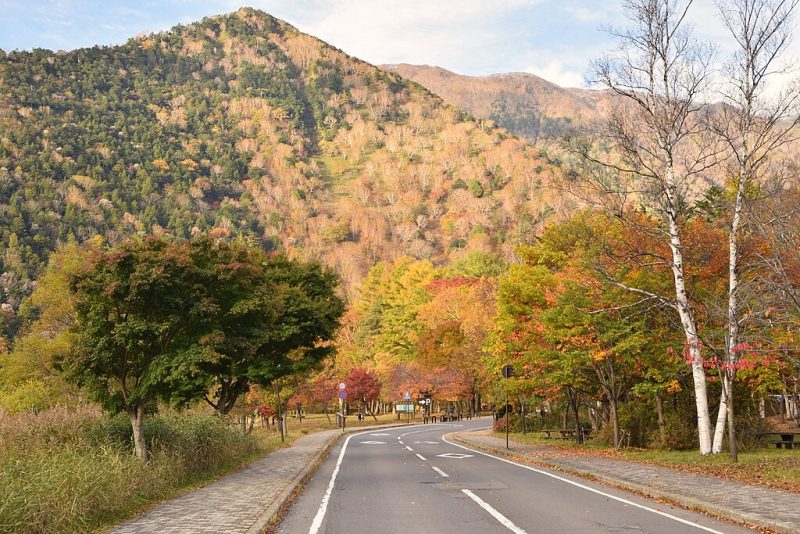Looking for perfect day trips from Tokyo in autumn? You’ll find nothing quite like the amazing changes around Japan’s capital between mid-November and mid-December. Tokyo’s yellow foliage will peak around November 26 in 2025, and red foliage will reach its most vibrant display by November 30.
The autumn season brings spectacular sights to Tokyo, especially at Meiji Jingu Gaien’s iconic avenue of 150 golden-yellow ginkgo trees that stretch 300 meters. The most stunning fall views await beyond the city limits. Kegon Falls stands as one of Japan’s magnificent autumn spots, where water cascades down a 97-meter drop against fiery foliage. A 1.5-2 hour trip from Tokyo leads to Nikko’s peak colors in early to mid-November. Lake Kawaguchiko offers breathtaking views of Mt. Fuji surrounded by mid-to-late November fall colors.
These day trips from Tokyo showcase the region’s fall beauty at its finest. Photography enthusiasts and city escapees will appreciate Kamakura’s late November to mid-December color display. These impressive autumn destinations remain easily accessible from Tokyo.
1. Mount Takao
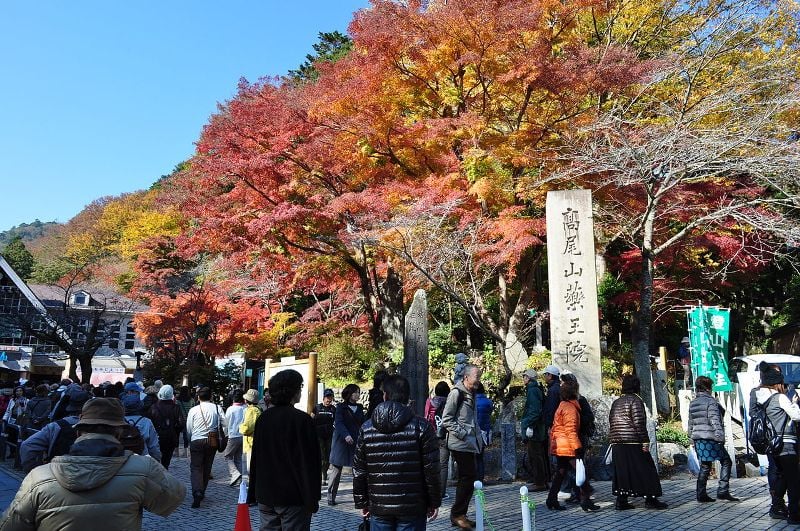
Mount Takao sits just an hour by train from central Tokyo. This natural paradise turns into a mix of crimson and gold every autumn. The 599-meter mountain has earned three stars in the Michelin Green Guide Japan and gives visitors one of the best fall foliage views near the capital.
The best time to see autumn leaves at Mount Takao runs from mid-November through early December. Normal temperatures in 2025 should make the views most spectacular from the second to fourth weeks of November. Different tree species create amazing layers of green, yellow, orange, and deep crimson that paint the scene.
You can reach Mount Takao easily. The Keio Line takes you straight to Takaosanguchi Station, the main entry point. People with JR Passes can take the JR Chuo Line to Takao station and switch to the Keio Line for a quick ride to Takaosanguchi.
The mountain offers several ways to explore. A cable car takes you from Kiyotaki Station at the base to Takaosan Station with great views of autumn colors along the way. This 6-minute trip brings you up to 472 meters. The chairlift provides a slower 12-minute climb for those who want to take their time.
Seven nature trails welcome hikers of every skill level. Trail 1 (Omotesando Trail) works best for beginners with its paved paths and attractions spread across 3.8km. Skilled hikers might enjoy Trail 6 or the Inariyama Course more.
The Mount Takao Autumn Leaves Festival runs from October 25 to December 14, 2025. Weekends and holidays come alive with taiko drumming shows, Japanese orchestra performances, yosakoi dancing, and exhibits at the Kiyotaki cable car station.
Yakuo-in Temple’s 1,200-year history adds to the mountain’s charm. The temple buildings look stunning against the fall colors. The summit’s observation decks show off Tokyo’s skyline and on clear days, you can spot Mount Fuji in the distance.
Mount Takao makes a perfect autumn day trip from Tokyo. Easy transport options, beautiful foliage, rich culture, and amazing views come together in one simple escape from the city’s busy streets.
2. Nikko
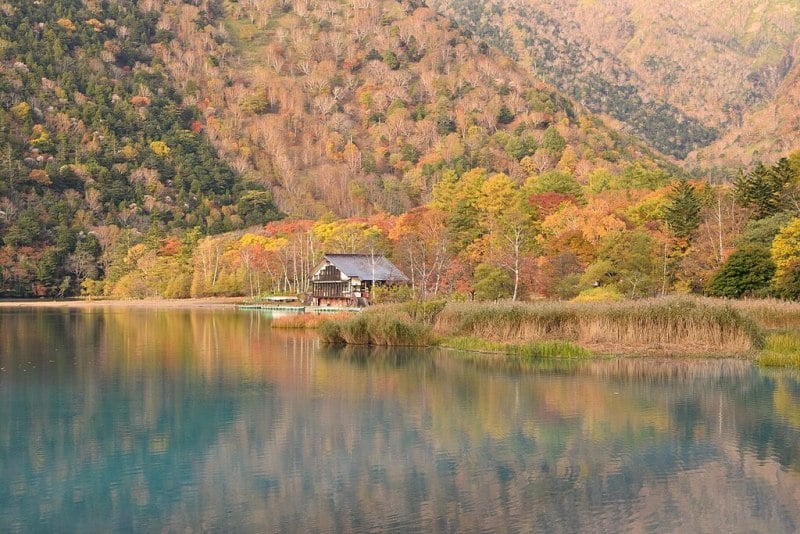
Nikko, tucked away in Tochigi Prefecture, holds a wealth of autumn colors and ranks among the best day trips from Tokyo. The region’s elevation range of about 2,000 meters creates a longer fall foliage season than other spots. Visitors can catch the changing colors as they sweep down the mountains from early October through early November.
Your autumn experience starts in Okunikko’s higher elevations where colors first pop up in early October. The vibrant display then moves to Lake Chuzenji by mid-October. The stunning Irohazaka Winding Road bursts into color late October, and finally, Nikko town welcomes autumn in early November. This extended season lets you plan your trips ahead with confidence.
Ryuzu Waterfall should top any leaf-peeper’s list. The trees here lead the color change, starting their show in early October. Photographers love capturing the waterfall’s dramatic drop against the backdrop of fiery reds and oranges. Yumoto Onsen brings together the best of both worlds – colorful leaves and soothing hot springs by mid-October.
Senjogahara Marshland paints itself yellow throughout October. The grasses change first, followed by golden larch trees. Lake Chuzenji, nestled at Mount Nantai’s base, puts on a spectacular show from mid to late October. The Hangetsuyama Observation Deck gives you an unmatched view over the lake.
Kegon Falls, one of Japan’s three most beautiful waterfalls, reaches its peak autumn glory in late October. The Irohazaka Winding Road snakes through 48 sharp turns and offers breathtaking views as colors cascade down from late October to early November.
Here are some practical tips to boost your visit:
- Beat the crowds by coming early or choosing weekdays
- Drivers should take the quieter route from Numata in Gunma Prefecture along National Route 120
- Foreign passport holders can save money with the Nikko All Area Pass
- Don’t forget to explore the area of Yumoto Onsen, a beautiful hot spring town in Nikko
Nikko’s natural beauty pairs perfectly with Toshogu Shrine, a UNESCO World Heritage Site. The shrine’s vibrant structures create a stunning harmony with the autumn leaves. This blend of culture and nature makes Nikko stand out among Tokyo’s day trip destinations.
3. Lake Kawaguchiko

Lake Kawaguchiko shines as the best spot among the Fuji Five Lakes to see autumn colors. You’ll find the most breathtaking views of Mount Fuji here, surrounded by blazing fall foliage. The lake’s surface creates perfect mirror images of snow-capped Fuji against colorful maple trees.
The spectacular Autumn Leaves Festival lights up Lake Kawaguchiko from late October through November. Next year’s festival runs from November 1-30, and the lakeside bursts into red and gold hues. About 400-500 maple trees paint the shoreline with brilliant autumn colors. Many people call it the perfect example of Japan’s autumn beauty.
The Momiji Corridor steals the show with its natural beauty. This 150-meter tunnel comes alive as 60 giant maple trees arch over a small canal. Sunlight streams through bright red leaves to create magical scenes. The corridor becomes even more beautiful at night. Special lights illuminate the area from 16:30 to 22:00, which turns it into something straight out of a dream.
A 1.5-kilometer stretch known as “Red Leaves Street” showcases different maple varieties. The festival area buzzes with food stalls, craft markets, and live shows at the lakeside plaza.
Photography enthusiasts will love the morning hours. The calm waters mirror Mt. Fuji perfectly among the colorful leaves. The north shore gives you the best views of the mountain. Early-season snow makes it look even more majestic against red maples.
Getting here is easy. Direct express busses leave from Tokyo’s Shinjuku Station every hour. The trip takes about 2 hours and costs ¥2,000. Another option takes you on the JR Chuo Line to Otsuki Station, where you switch to the Fujikyu Railway for Kawaguchiko Station. The “Retro Bus” sightseeing loop makes exploring simple with its 2-day pass (¥1,500) that covers all major spots.
You can rent bikes near Kawaguchiko Station for ¥1,500 per day. Cycling around the lake lets you find hidden maple spots and quiet benches with amazing Fuji views that most visitors miss.
4. Hakone

Hakone’s volcanic terrain and relaxing hot springs make it a perfect autumn getaway from Tokyo. This mountainous retreat sits just 80 minutes from central Tokyo by direct Odakyu Romancecar. The landscape bursts into red and gold hues from late October through November.
The “Hakone Round Course” makes getting around simple with its circular route on public transportation. You’ll find the Hakone Freepass a great way to get unlimited rides on all Odakyu-affiliated busses, trains, ropeways, cable cars and ships in the area. Travelers can buy this pass at ticket counters, machines, or through their smartphones.
Lake Ashi shines as Hakone’s autumn jewel, with leaves reaching their most brilliant colors from mid to late November. Mirror-like waters reflect mountains dressed in fiery autumn shades. The lake’s quirky pirate ships give you a chance to see everything from a different angle. You can capture the iconic shot of Hakone-jinja Shrine’s large torii gate standing in the lake, with Mount Fuji and colorful autumn leaves creating a perfect backdrop.
Owakudani adds volcanic drama to Hakone’s natural beauty. This active geothermal valley emerged 3,000 years ago and shows its best autumn colors from late October to early November. White sulfur steam rises against vibrant fall foliage, creating a scene unique to this part of Tokyo. Don’t miss trying the famous “black eggs” – chicken eggs cooked in sulfuric waters that locals say add seven years to your life per egg.
The Hakone Open-Air Museum, Japan’s pioneer outdoor museum, beckons art lovers. Autumn enhances the outdoor sculptures as they stand against a canvas of red and orange leaves. Nature’s artistry complements the artwork perfectly during fall.
Gora Park blends Japanese and Western garden styles into a beautiful autumn setting. Some years bring an extra treat when autumn leaves appear with late-blooming roses.
A soak in a hot spring bath while watching colorful leaves dance in the crisp air makes the perfect end to your Hakone autumn day trip. This combination of warm waters and fall colors creates a truly Japanese experience.
5. Kamakura
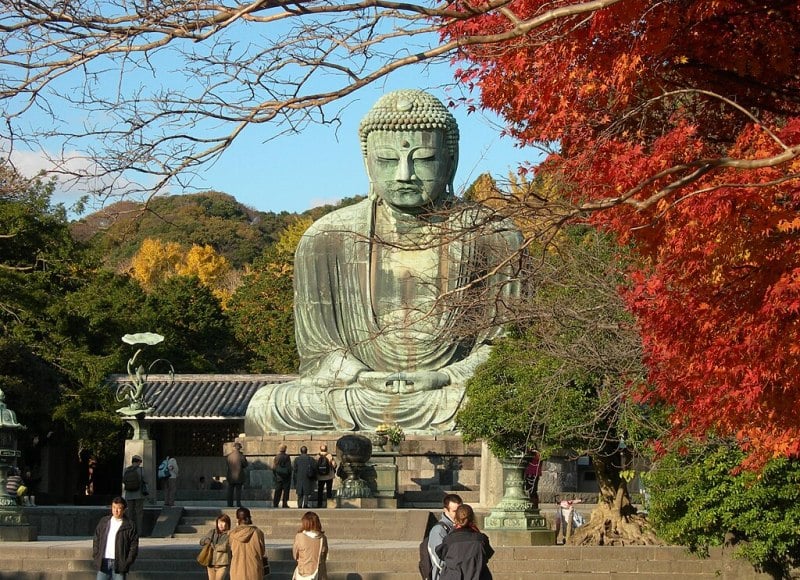
Kamakura blends coastal charm with rich history to create an exceptional autumn experience just an hour from Tokyo. This seaside town, nicknamed “Little Kyoto,” comes alive with vibrant fall colors from late November to early December. The timing makes it a perfect destination for a late-season day trip.
The Great Buddha (Kamakura Daibutsu) at Kotoku-in Temple stands as the town’s centerpiece. This magnificent bronze statue of Amitabha Buddha was cast around 1252 during the Kamakura period. The hollow bronze giant reaches 13.35 meters high and weighs about 93 tons. Most large Buddha statues in Japan stay indoors, but this one sits outdoors majestically. The setting creates beautiful photo opportunities against the autumn leaves. Visitors can enter the statue’s interior for just 50 yen beyond the 300 yen entrance fee.
Hasedera Temple is one of Kamakura’s most stunning spots to see autumn colors. The temple dates back to 736 AD and its Jodo-sect gardens become a kaleidoscope of fall colors. Maple trees line the winding hillside paths and show off colors from green to red. The temple hosts a special light-up event until December 8th. The illuminations highlight the foliage from sunset until closing at 19:30.
Tsurugaoka Hachimangu Shrine showcases more magnificent autumn views. This shrine, dedicated to Hachiman, the God of Victory, has stood since 1063. The complex’s ponds, bridges, and gardens display spectacular fall colors. Red curved bridges lead to many quiet spots on the shrine’s spacious grounds.
Japanese autumn reveals its beauty at these spots too:
- Engakuji Temple’s Sanmon gate area in Kita-Kamakura glows with maple colors
- Kenchoji Temple shows bright colors near “Hanzobo” at the back of its grounds
- Genji-yama Park offers stunning maple views, though its ginkgo leaves fall earlier
Getting to Kamakura is easy. Take the JR Yokosuka Line or Shonan-Shinjuku Line – both take about an hour from central Tokyo. The Enoshima-Kamakura Freepass (¥1,640 from Shinjuku) lets you use unlimited local transportation.
Kamakura delivers a special autumn day trip. History, coastal beauty, and fall colors come together perfectly. The temperatures stay between 15 to 25 degrees Celsius, making it comfortable to explore this atmospheric ancient capital.
6. Okutama
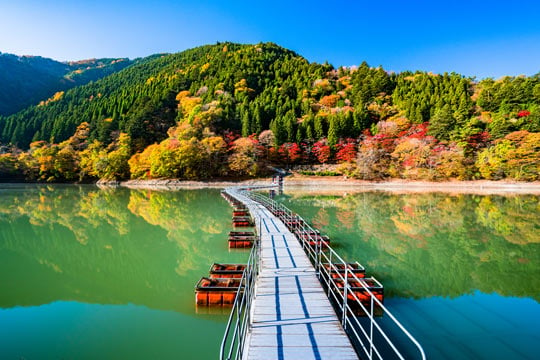
A natural paradise awaits in western Tokyo. Okutama captivates visitors with its mountain retreats, pristine rivers, and dramatic gorges that paint an autumn tableau. This mountainous region provides a stark contrast to Tokyo’s concrete jungle, though it technically lies within the city’s borders.
Nature puts on its most spectacular show in Okutama from late October to mid-November. The 2025 season might run slightly behind schedule, with the most vibrant colors expected to emerge from early to mid-November. This later timing lets visitors extend their autumn viewing after exploring other nearby spots.
Lake Okutama’s cobalt-blue waters mirror the surrounding fall colors beautifully. Two floating bridges in the Tozura and Mugiyama areas give visitors the best vantage points. Photography enthusiasts will find picture-perfect shots of the lake and its colorful surroundings from Tsukiyomi Daiichi parking lot.
The area offers several remarkable viewing spots that deserve attention:
- Hatonosu Canyon draws photographers with its clear streams that wind between uniquely shaped rocks and steep cliffs
- Mitake Gorge features a 4-kilometer walking path along the Tama River’s banks, with stunning nighttime illuminations
- Hikawa Valley creates an autumn foliage tunnel across Hikawa Kobashi Bridge where Nippara River meets Tama River
Okutama’s appeal extends beyond leaf-viewing. Visitors can relax in hot springs after outdoor adventures, try their hand at fishing, hit the hiking trails, or brave the Tama River’s white-water rapids. The region comes alive with autumn festivals and momiji events from late October through November, adding cultural flair to nature’s display.
This mountain sanctuary sits just 90 minutes from Shinjuku Station. Okutama proves that Tokyo’s bustling energy and mountain serenity can coexist perfectly.
7. Karuizawa
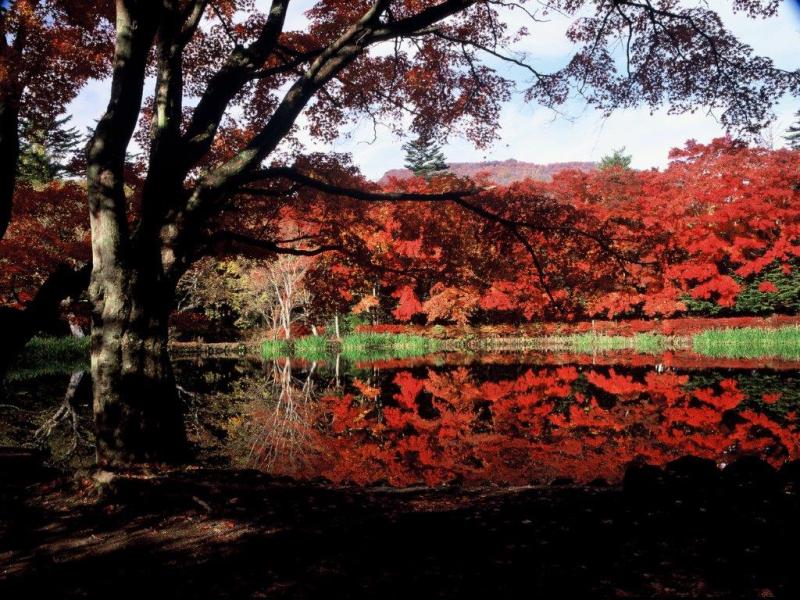
Karuizawa stands as an elegant highland retreat in Nagano Prefecture’s mountains. This sophisticated resort town sits 1,000 meters above sea level and offers a perfect escape from Tokyo’s busy streets. Visitors can reach it in just 65-80 minutes on the Hokuriku Shinkansen.
The town’s autumn colors peak between mid-October and early November, creating a spectacular show that attracts people from all over Japan. The high elevation makes temperatures drop faster, which turns the leaves’ colors almost all at once to create a stunning display. The most beautiful colors will paint the landscape during October’s last two weeks in 2025.
Kumobaike Pond, known locally as “Swan Lake,” ranks as the town’s most popular spot to view fall colors. The still water creates perfect mirror images of maple trees, which look magical in the early morning light. The Usui Pass Observation Platform sits 1,200 meters high and gives breathtaking views of autumn colors spreading across both Gunma and Nagano Prefectures.
Popular spots to see autumn colors include:
- Former Mikasa Hotel – a Western-style architectural treasure under renovation until 2025
- Old Karuizawa Ginza Street – home to many long-running cafés, bakeries, and souvenir shops
- Shiraito Falls – where water streams look like white silk threads against the red autumn leaves
Canadian missionary Alexander Croft Shaw’s arrival in 1886 marked the beginning of Karuizawa’s growth as a premier resort. The town now features beautiful churches that showcase its international heritage. These include Shaw Memorial Church (1895), Karuizawa Kogen Church, and the impressive Stone Church.
Karuizawa Prince Shopping Plaza sits near the station with over 200 stores in an outdoor setting that offers mountain views. The complex feels different from typical malls thanks to its natural design with walking paths and rest areas.
The crisp mountain air makes fall the best time to visit this highland getaway that has charmed people since the late 1800s.
8. Nagatoro
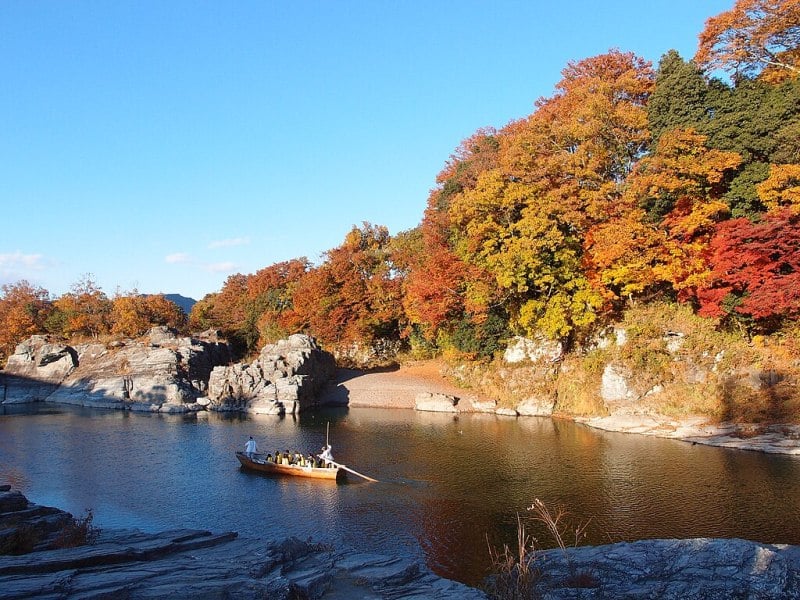
Nagatoro, a riverside gem in Saitama Prefecture, puts on a stunning autumn display throughout November. You can reach this beautiful spot in about 90 minutes from Ikebukuro or Ueno. The location makes it a perfect escape from Tokyo’s busy streets.
The town comes alive with fiery reds and golden yellows during the Nagatoro Fall Foliage Festival from November 1st to 30th. Nature lovers will find three amazing spots to take in the views: the stunning Iwadatami rock formations by the Arakawa River, the picturesque Kanaishi Suikan Bridge, and Mount Hodo’s slopes.
The magic really happens after sunset. Tsuki no Ishi Momiji Park lights up around 200 trees, mostly Japanese maples, from November 8th to 24th between 4pm and 9pm. Hodosan Shrine adds to the enchantment with its own nighttime display from November 2nd to 24th. The shrine buildings glow beautifully against the autumn leaves.
Mount Hodo stands 497.1 meters tall and offers both hiking trails and a quick 5-minute ropeway ride. The summit rewards visitors with sweeping views of mountain ranges dressed in fall colors. During the festival, the Hodosan Ropeway runs longer hours just for sunset viewing.
The Nagatoro River boat cruise adds an extra special touch to your autumn visit. Skilled boatmen navigate traditional wooden boats past the Iwadatami rocks where autumn colors mirror perfectly in the water. This 20-minute ride mixes calm photo opportunities with exciting small rapids.
The day wouldn’t be complete without exploring Iwadatami Dori shopping street. Hot senbei rice crackers fresh off the grill make the perfect snack on a cool autumn day.
9. Showa Kinen Park
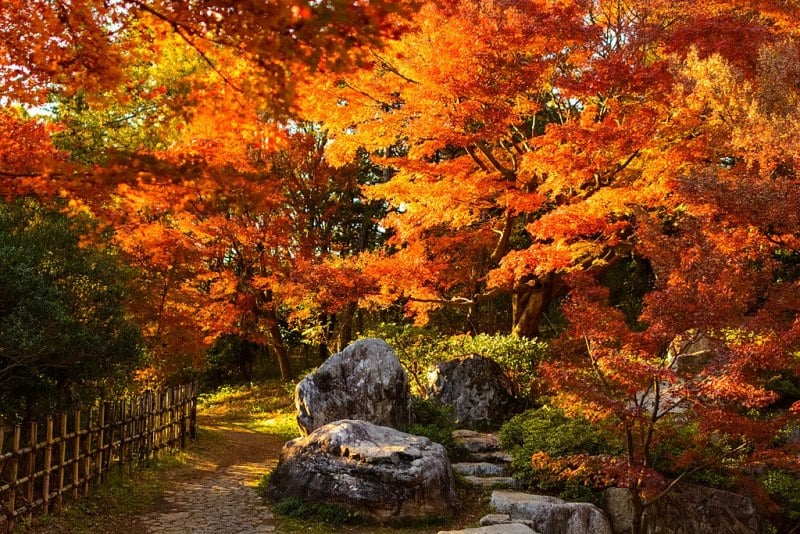
Showa Kinen Park spans 160 hectares in Tokyo’s western suburb of Tachikawa. This 40-year old park turns into a golden paradise during autumn and offers one of the best fall experiences near the capital. The park stands as a tribute to Emperor Showa’s 50th reign anniversary. This big green space now serves as a spectacular autumn retreat for anyone looking to escape Tokyo’s urban buzz.
By mid-November, two magnificent ginkgo-lined promenades create breathtaking tunnels of gold – one runs along the canal while another sits near the sports park. Sunlight filters through the canopy and casts everything in a warm amber glow. Morning visits are best when fallen leaves create a perfect golden carpet beneath your feet.
The park’s Japanese garden showcases a different autumn palette. Maple trees burst into brilliant shades of crimson that stand out against other features. The park hosts special seasonal events through autumn with guided tours and traditional tea gatherings.
Magic happens after sunset between late October and late November. The park stays open until 8:30pm and lights up both ginkgo avenues and the Japanese garden. Nighttime brings an extraordinary display as strategic lighting highlights the most vibrant colors.
The park is easy to reach from central Tokyo. Take the JR Chuo Line to Nishi-Tachikawa Station – it’s a two-minute walk to the west entrance. You could also get off at Tachikawa Station and take a ten-minute stroll to the main gate. Adults pay 450 yen, seniors 210 yen, and children under 15 get in free.
The park’s size makes bike rental a smart choice. Cycling is the quickest way to see everything while still having time to stop and soak in autumn’s beauty in different areas.
10. Mount Mitake
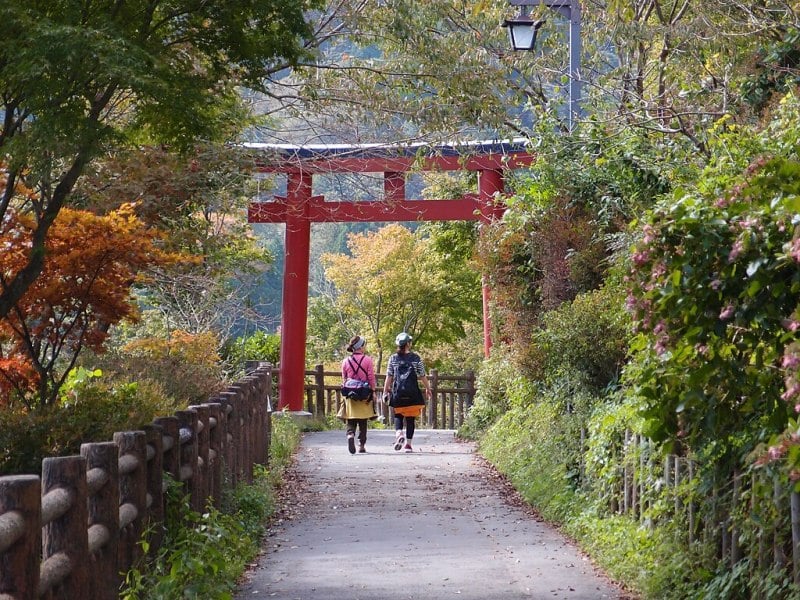
Mount Mitake stands as a peaceful autumn retreat at Tokyo’s western edge. This 929-meter peak in the Chichibu-Tama-Kai National Park shows off its best fall colors from late October to mid-November. Visitors can reach it within two hours from central Tokyo.
Your trip starts at Shinjuku Station. Take the Chuo Line to Mitake Station, which takes about 90 minutes, then catch a shuttle bus to the cable car station. Some adventurous visitors hike up the mountain, but most people take the scenic cable car ride that leads to Mitakesan Station.
The mountain village reveals the 2,000-year-old Musashi-Mitake Shrine. Wolf statues guard the shrine and represent Oinu-sama, a protective deity. The shrine’s builders placed its east-facing structures to shield old Edo (Tokyo) spiritually.
The Rock Garden Trail draws autumn visitors with its natural beauty. This 2½-hour loop features a stream that flows through moss-covered stones. Fall colors paint the scene in red and gold. Ayahiro Falls sits nearby, marked by a torii gate that locals see as a sacred spot.
Visitors can spend the night in traditional shukubo (shrine lodgings) that pilgrims have used for centuries. Some lodgings let guests try takigyo, a unique meditation practice under waterfalls.
11. Ikaho Onsen
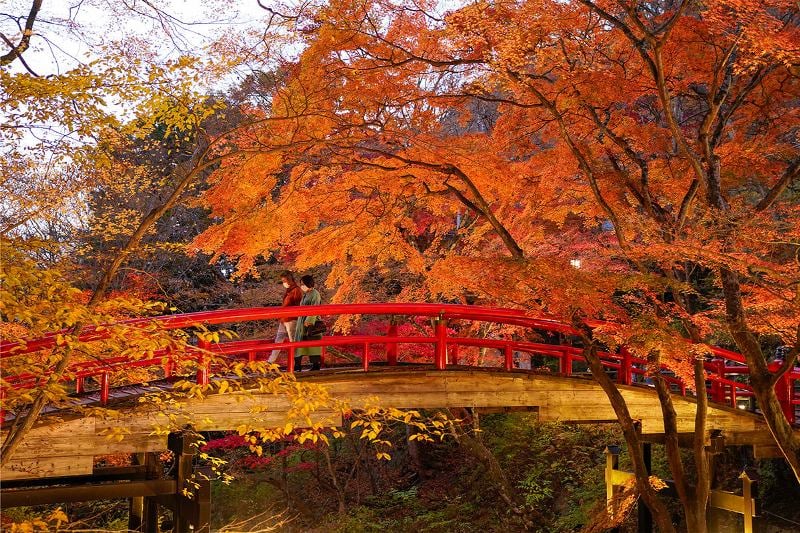
Mt. Haruna’s slopes are home to Ikaho Onsen, a historic hot spring town known for its therapeutic waters with a special characteristic. Located just two hours from Tokyo, this hidden gem attracts autumn visitors with its distinctive reddish-brown “Golden Water” (Kogane no Yu) hot springs. The water’s high iron content creates an oxidation effect when exposed to air.
Stone steps serve as the town’s centerpiece, where ryokan and public baths create a charming atmosphere along the pathway. The area bursts into vibrant colors during autumn, especially near Kajika Bridge. Japanese maples create a quintessential Japanese scene that glows beautifully at night from late October through mid-November.
Visitors can experience authentic bathing at two public bathhouses. The outdoor Ikaho Rotemburo sits near the hot spring source and costs 600 yen, while Ishidan no Yu near the lower stone steps charges 800 yen. Many ryokan welcome non-guests to use their baths for 500-1500 yen.
Reaching Ikaho involves taking trains to Shibukawa Station and a 20-minute bus ride to Ikaho Town. Some travelers choose the JR Joetsu/Hokuriku Shinkansen to Takasaki before switching to a local train.
These centuries-old springs date back to the 8th century and offer more than just healing waters. The local specialty “onsen manju” – steamed buns filled with sweet beans that originated here – makes a perfect autumn snack after a relaxing soak.
12. Oyama-dera Temple
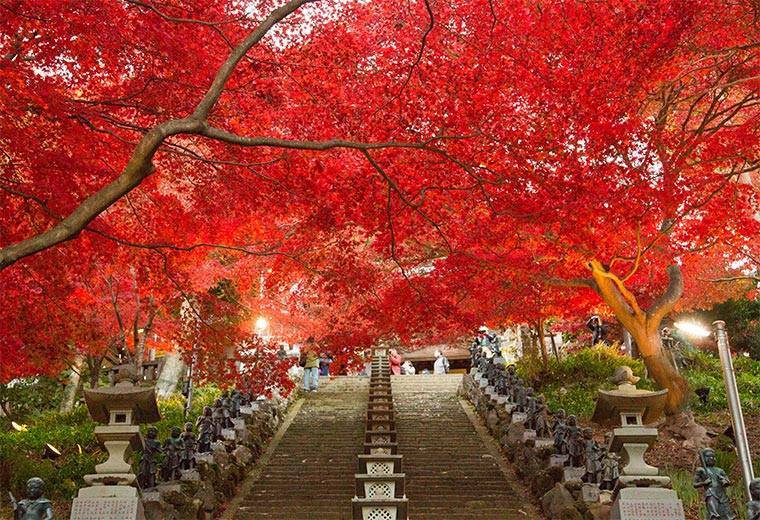
Oyama-dera Temple has stood majestically on Mt. Oyama in Isehara City, Kanagawa Prefecture since 755 AD. This sacred site, lovingly known as “Fudo-san in Oyama,” ranks among the three major fudo temples in the Kanto region. The temple makes a perfect autumn day trip from Tokyo.
The temple becomes extraordinary in fall with its 150 trees, including the remarkable ‘Ōsakazuki’ maples that showcase unusually large leaves. A breathtaking “tunnel” of bright red maple trees frames the stone steps that lead to the temple.
The path’s cultural beauty shines through its 36 Doji statues and stone lanterns. The temple’s main treasures are its iron statues of Buddhist deity Fudo Myo-o and accompanying deities, which Japan has designated as important cultural properties.
Visitors can catch peak autumn colors in late November. The nighttime illuminations create a magical atmosphere that’s completely different from daytime visits. These special light displays run from sunset until 7:00 pm on weekdays and 8:00 pm on weekends.
The journey to this autumn paradise starts with a ride on the Odakyu Line to Isehara Station. A bus takes you to Oyama Cable station, followed by a 15-minute walk and a 4-minute cable car ride. The temple charges ¥400 for admission.
Explore These Stunning Attractions in Autumn From Tokyo
Tokyo’s surroundings turn into an array of crimson and gold at this time of year. The autumn experience here stands unmatched by other seasons. My time learning about these day trips shows they need little planning but reward you with stunning beauty. Each spot has its own magic – you can see Mount Fuji framed by fiery maples at Lake Kawaguchiko or relax in iron-rich waters at Ikaho Onsen surrounded by colorful leaves.
These autumn getaways are easy to reach. You can get to most spots within two hours from central Tokyo, which makes them great for last-minute trips. The extended viewing season runs from mid-October through early December. This timing lets you see multiple spots as colors change from high to low ground.
Camera buffs will without doubt love the different scenes. You can capture lit up maple tunnels at Oyama-dera Temple or the golden ginkgo avenues of Showa Kinen Park. Nature fans can walk through Mount Mitake’s sacred forests. History lovers might prefer to visit Kamakura’s ancient temples decorated in fall colors.
Here’s my tip – build your Tokyo autumn schedule based on timing. Start with higher spots like Nikko or Karuizawa in late October. Then move to lower areas like Kamakura as November rolls in. This way you’ll catch peak colors at several locations.
These day trips show Japan’s most magical side – where tradition, nature, and seasonal beauty mix perfectly. You’ll never forget standing under maple leaves or watching sunset color Mount Fuji against autumn shades. Just grab comfy shoes, your camera, and maybe some hot tea – Tokyo’s autumn wonderland is ready to welcome you.
FAQs
Q1. What are some of the best day trips from Tokyo to see autumn foliage? Some top autumn day trips from Tokyo include Mount Takao, Nikko, Lake Kawaguchiko, Hakone, and Kamakura. These destinations offer stunning fall colors, typically peaking between late October and early December depending on the location’s elevation.
Q2. When is the best time to see autumn leaves near Tokyo? The autumn foliage season near Tokyo generally runs from mid-October to early December. Higher elevation areas like Nikko see colors earlier (mid-October to early November), while lower areas like Kamakura peak later (late November to early December).
Q3. Are there any autumn festivals or special events near Tokyo? Yes, many areas host autumn festivals and events. For example, Lake Kawaguchiko holds an Autumn Leaves Festival in November with illuminations, while Nagatoro has a Fall Foliage Festival throughout November featuring nighttime light-ups at various locations.
Q4. What’s the most convenient way to reach these autumn viewing spots from Tokyo? Most autumn viewing destinations are easily accessible by train or bus from Tokyo. For instance, Mount Takao is just an hour away by train, while places like Nikko and Hakone can be reached in about 2 hours using Japan’s efficient public transportation system.
Q5. Can I enjoy hot springs along with autumn foliage viewing? Absolutely! Many popular autumn viewing spots like Hakone and Ikaho Onsen offer hot spring experiences. You can soak in outdoor baths while surrounded by colorful fall foliage, combining relaxation with scenic beauty.
